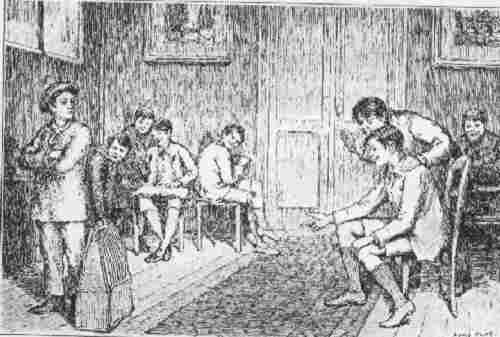
Figure 1.--This drawing for a French book shows a scene from a French school. We are not positive how to date it, but would estimate the inter-war era. |

|
Smocks were still commonly worn by French school boys after World War I, but they were no longer universal. I'm not sure why smocks became less common after World War I. Perhaps the French Government which made them manditory after the Franco-Prussian War, may have changed the regulations. We are not sure when they became optional. It seemed to have varied from school toi school. Some individual schools, however, may have required them. Even though optional, smocks were still still quite common until after World War II (1939-45) in the the 1950s. Mothers apparently liked them to protect clothes. Unfortunately our French photigraphic record is not as complete as is the case in many other major countries. We are not entirely sure why French school images ar anot as readily available as for other countries.
There were significant changes in boys wear in France during the two and half decades following World War I. One of the many changes as a result of the War were changing attitudes toward fashion. Boys clothing became much less formal and by the 1930s increasingly casual. We still see boys wearing berets and smocks to school, but not as many as we see in before the War when it was was vitually universal. We are not sure when they became optional. It seemed to have varied from school toi school. Some individual schools, however, may have required them. Even though optional, smocks were still still quite common until after World War II (1939-45) in the the 1950s. Mothers apparently liked them to protect clothes. We also see shorter-length smocks. And thge militart-styled unifirns began to decline. We are not enitely sure why this was. Changing fashion attitudes may be a factor. There may also have been a change in Ministry of Education regulations. The change as not as great as what occurred after World War II, but there was a notable change which we can see in the photograohic record. This is a sunject we are still studying.
We note numerous images of French boys wearing smocks to school in the 1920s and 30s. We note at some scgools almost all the boys wore smocks, commonly dark smocks. There are usually a few boys who do not wear them, suggesting that it may not have been a school rule, at least not a very strictly enforced rule. We notice other schools, especially by the 1940s where smocks were not very common. We do not have much information on what happened during the World War II German occupation (1940-44). It appears as if fewer boys diring this period wore smocks to school, but our information is still very limited. We also notice some images where quite a number of boys wore berets and others where virtually none of the boys wore them. One very common pattern f\during this period is that most boys in primary school wore short pants.
Smocks were still commonly worn by French school boys after World War I, but they were no longer universal. I'm not sure why smocks became less common after World War I. Perhaps the French Government which made them manditory after the Franco-Prussian War, may have changed the regulatiinsd. I'm not sure when they became optional. Some individual schools, however, may have required them. Even though optional, smocks were still still quite common until after World War II (1939-45) in the the 1950s. Mothers apparently liked them to protect clothes.
Boys no longer wearing smocks, commonly wore suits to school. Boys at the time did not have the extensive wardrobes that modern boys do. Thus there suit jacket was in many cases the only jacket-like garment a boy might have. Ties were less common, except with older boys in their last few years of secondary school.
Short pants became almost universally worn by French boys in the inter-war period. Most boys wore knee-length shorts, but some younger boys wore shorter cut shorts. Boys generally wore short pants all year round even in the winter, although older boys mught have long pants for winter. Shorts were commonly worn by elementary-age boys and during the junior years of secondary school. Only in the last couple of years of secondary school did long pants become common.
Related Chronolgy Pages in the Boys' Historical Web Site
[Main Chronology Page]
[The 1880s]
[The 1930s]
[The 1940s]
[The 1950s]
[The 1960s]
[The 1970s]
[The 1980s]
Related Style Pages in the Boys' Historical Web Site:
[Main school page]
[Main French country page]
[Long pants suits]
[Short pants suits]
[Socks]
[Eton suits]
[Jacket and trousers]
[Blazer
[School sandals]
Navigate the Boys' Historical Clothing School Pages
[Return to the Main French 20th century school page]
[Return to the Main French school page]
[Australia]
[England]
[France]
[Germany]
[Italy]
[Japan]
[New Zealand]
[Scotland]
[United States]
Navigate the HBC School Section"
[About Us]
[Activities]
[Chronology]
[Clothing styles]
[Countries]
[Debate]
[Economics]
[Garment]
[Gender]
[Hair]
[History]
[Home trends]
[Literary characters]
[School types]
[Significance]
[Transport and travel
[Uniform regulations]
[Year level]
[Other topics]
[Images]
[Links]
[Registration]
[Tools]
[Return to the Historic Boys' School Home]
